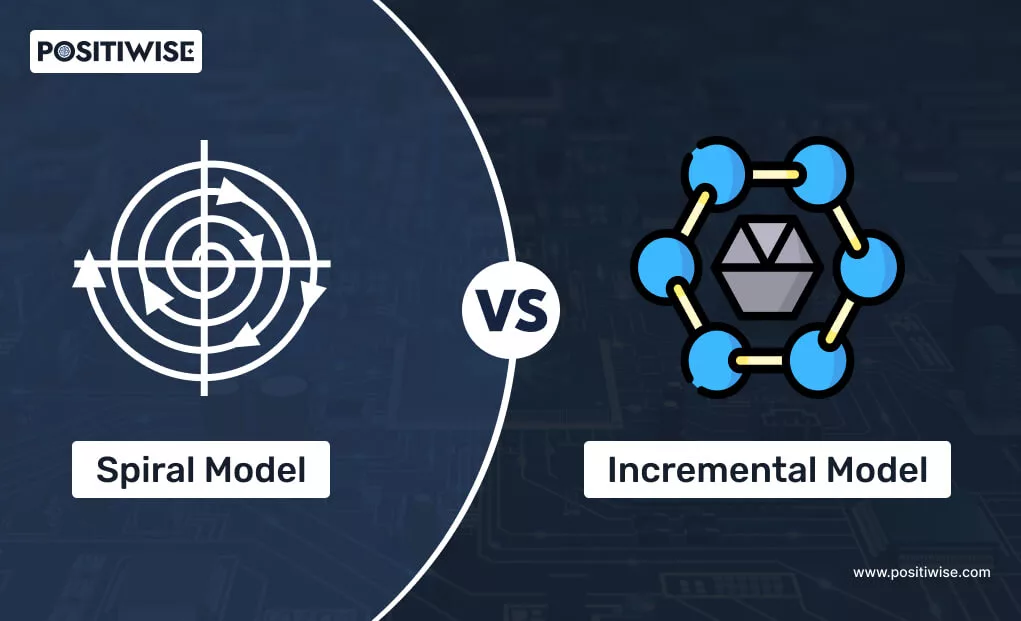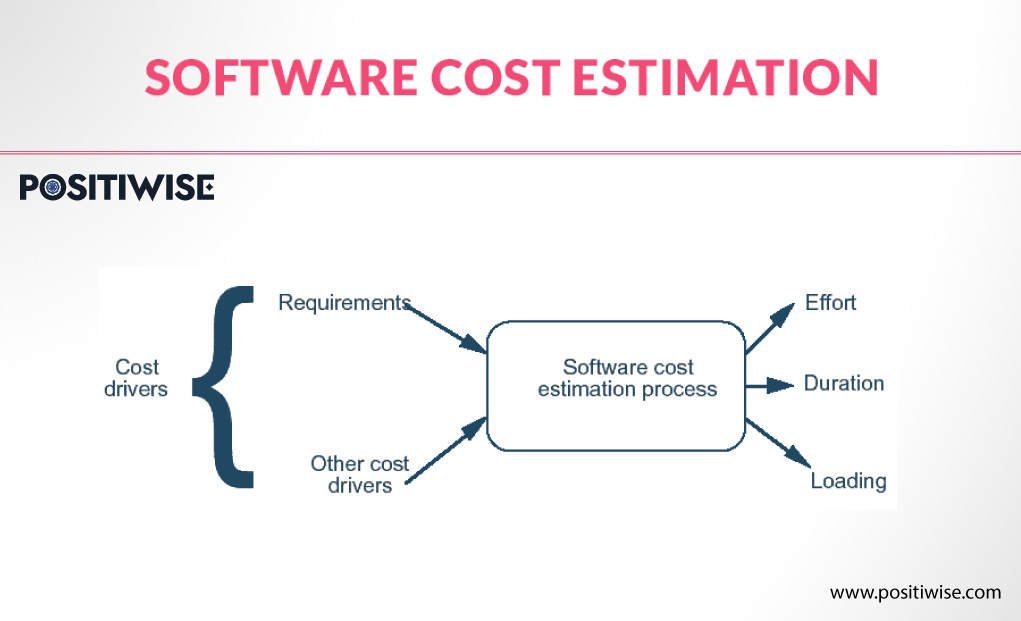Quick Overview:
Selecting the appropriate Software Development Lifecycle (SDLC) model before starting a software development project is essential to its success. The Spiral VS Incremental Model are two widely used approaches that are frequently applied. Each strategy has its advantages and works well for various kinds of tasks. We’ll examine these two models in detail in this blog, contrasting their features, benefits, and best practices.
Introduction
Software development phase models are the Spiral VS Incremental Model. You will learn in detail about the spiral vs incremental model. The Spiral Model is a risk-driven approach to software development that can manage big projects and address hazards early on, but it is costly and needs a large workforce. However, the Incremental Model, which is best suited for smaller endeavors with fewer teams, produces the final product in smaller, more manageable modules that are easier to modify, less expensive, and often tested after each iteration.
What is the Incremental Model of SDLC?
The iterative process breaks the software project up into smaller, more manageable versions or increments, using a time-driven approach; for every software release that adds new features and functionality, the same processes of analysis, development, execution, and testing are repeated. Rapid and frequent software delivery is the goal of the iterative technique, which also strives to enhance the quality and performance of the product through testing and user feedback.
Small, straightforward, and reliable software projects with precise requirements are a good fit for the iterative process. The customer offers input that is included in the next iteration of the product when each new version is given. The previous release gained additional features with each iteration.
Exploring Several Phases of The Incremental Model
The incremental model, often referred to as the incremental development model, is a method for developing software that divides the process into more manageable, smaller stages. Every stage expands on the one before it, thereby giving the program more features and capabilities. When there are changing demands for the project or when the requirements are not completely known up front, this approach is especially helpful.
Analysis of requirements
The product research expertise determines the needs in the first stage of the incremental model. Additionally, the demand analysis team is aware of the system’s functional needs. This stage is vital to the software development process under the incremental paradigm.
Conditions Collecting
The high-level software requirements are acquired and examined at this first stage. The next stages are built upon these needs.
Design
The software’s design, architecture, and interfaces for users are planned and built based on the requirements that have been obtained. To guarantee a targeted and well-organized development process, the design is frequently broken down into smaller components.
Testing
New features are tested to make sure they perform as intended and don’t adversely affect already-existing functionality. Testing is done when each increment is finished.
Collaboration
The recently created increments are included in the current software at this step. This may entail combining code, settling disputes, and making sure that every element functions as a whole.
Evaluation and Comments
Following each iteration, interested parties examine the new features and offer comments. The requirements, design, and execution of the next increments may all be improved with the help of this input.
Iterative Cycle
By progressively adding new features and enhancements, the software creation method iterates through the aforementioned phases. The program gets more reliable and feature-rich with every update.
Implementation
A chunk of the software’s functionality is implemented with each increment. Developers work on incorporating modules, features, or other elements that were intended during the design stage. The release of viable software can happen more quickly with this incremental approach.
Explore the Advantages of the Incremental Model Of SDLC
The main advantage of the incremental model is its ability to provide early and continual software updates, which facilitates user feedback gathering and adaptability to changing needs.
- Early in the software life cycle, the functioning software is developed more quickly.
- There is greater flexibility in the process.
- Modifying software during the development phase is less expensive.
- Smaller iterations make testing and debugging simpler.
- Because problematic components are recognized and addressed during its iteration, risk management is made easier.
Discover the Limitations of the Incremental Model Of SDLC
- It takes a lot of time to refine in one iteration, as adjustments must be made to every other software version.
- It requires careful design and preparation.
- If certain needs aren’t gathered before the development phase, problems with software architecture might occur.
- It must first be fully and precisely defined for the system to be divided into its parts.
Utilizing Incremental Models When and How?
When needs are well specified, and the breakdown of the system is understood, this paradigm works effectively. This strategy is well-liked by businesses that produce online applications and those that focus on products. In addition, the concept may be applied in situations where an early product launch is required. Furthermore, the following situations can take advantage of the incremental model:
- There is the utilization of new technologies.
- It’s rare to find specialists with the necessary abilities.
- A few objectives and features carry a high risk.
The development team builds the system’s core components first during the development life cycle and then adds additional features in later iterations. After these features are effectively included, they are enhanced by adding more functionality in subsequently released versions, which increases the product’s functions. Every iteration of this process builds on the one before it, using a waterfall paradigm. Every time a new version of the program is produced, it is sent to the client location for testing and input, which is then used to enhance the version.
The development process is divided into many versions after the requirements have been gathered and specified. Version 1 is the starting point for every version development, and following each successful version release, the client site increments.
What is the Spiral Model Of SDLC?
The waterfall and prototyping models are combined with parts of the spiral technique, a risk-driven approach. Planning, risk analysis, engineering, and assessment make up its four quadrants. Every quadrant symbolizes a software project cycle or iteration, which begins with a modest scope and progressively grows in complexity and expense. Using user feedback and testing, the spiral technique seeks to identify and minimize the software project’s possible risks and uncertainties at each cycle. Large-scale, intricate, and dynamic software initiatives that need regular modifications and adjustments might benefit from the spiral process.
The spiral model is a risk management technique that integrates aspects of the waterfall model with the model of the iterative development process inside the systems development lifecycle (SDLC). Software developers employ the spiral model, which is preferred for complex, large-scale projects.
Exploring the Stages of the Spiral Framework
In a spiral model diagram, the angular degree represents the current phase’s progress, and the radius represents the project cost. Each phase begins with a design objective and concludes with a client or developer assessment of the work.
Analysis of Requirements
This stage examines and justifies the action taken. In addition, if the intended version fails, alternate alternatives are identified.
Examination of Risks
This stage extensively and meticulously examines the hazards associated with each potential fix. This is done to find any flaws or weaknesses, such as software that is vulnerable to cyberattacks or overspending. Every danger is addressed with the most effective plan of action.
Model Structure
Programmers develop an architectural design and architecture modules, design the actual product, and complete the design in this step. It transforms the proposal from the prior two stages into a functional piece of software.
Discover the Advantages of the Spiral Model Of SDLC
Utilizing the incremental approach is crucial because it divides software development into smaller units, and each unit is produced by adhering to the software development life cycle (SDLC) procedure.
- Software may be easily modified and expanded with new features.
- Because software is created in tiny sets, cost estimation is simple.
- Continually making adjustments aids in risk management.
- The methodical addition of features speeds up the development process.
- Clients are included in the development process to receive feedback on time.
Explore the Limitations of the Spiral Model Of SDLC
- Because it takes several cycles for small tasks, it is expensive.
- It has in-between stages with an excessive amount of paperwork.
- The phases of development should be taken care of dutifully.
- A specialist in risk assessment is needed.
Using the Spiral Model How and When
The spiral model emphasizes careful risk assessment and is a risk-driven paradigm. It works well for lengthy projects when the customer is unable to clearly define every need or when project needs may alter midway through. As a result, it is used for software development projects that have ambitious or ambiguous business demands. Additionally, the concept may be applied to projects requiring frequent review and complicated needs.
The entire process is divided into several modules under the spiral model. Consequently, the buyer receives the module. It is ready for use right away. If a client needs an alteration, the suggested model is also advantageous. It is simple to apply in the process of development. Develop your project gradually. Because it aligns with the natural process of development of any product—that is, learning with maturity—and minimizes risk for both development companies and customers, the Spiral Model is frequently utilized in the software industry.
Starting with a modest set of requirements, the development procedure within the Spiral model of the SDLC proceeds through each development step for those needs. When a new demand arises, the computer software engineering team builds functionality in ever-increasing spirals until the program is prepared for production. The illustration below clearly explains the spiral model.
Explore the Direct Comparison Between Spiral VS Incremental Model: SDLC
| Basis | Spiral Model | Incremental Model |
|---|---|---|
| Definition | The spiral model is a software development methodology that combines elements of evolutionary, waterfall, and incremental prototyping approaches. | The incremental model of software development involves analyzing, designing, implementing, and testing the product step-by-step until it is completed. |
| Planning | Early planning and needs are also essential in spiral models. | Early planning and incremental model needs are essential. |
| Flexibility to Change | It is not too difficult to modify the spiral model’s flexibility. | It is simple to make changes to an incremental model. |
| Risk | The spiral model has a minimal level of risk. | The incremental model has an increased level of risk. |
| Cost | The spiral model is quite costly. | The cost of the incremental model is comparatively lower. |
| Project Size | Large projects can be handled with spiral models. | Big projects are beyond the scope of the incremental approach. |
| Phases Overlapping | Phase overlap is not conceivable in the spiral model. | In the incremental model, stages may overlap. |
| Testing | After the engineering process, testing is conducted using a spiral model. | Following each phase iteration, incremental model testing is conducted. |
| Previous Stage Returning | In the spiral model, going back to a prior stage or phase is feasible. | In an incremental paradigm, going back to a prior step or phase is feasible. |
| Team Size | A large team is needed for the spiral model. | A huge team is not necessary for the incremental model. |
Conclusion
They might be able to accomplish this with the use of both spiral and incremental models, which identify the best resources for each stage of the software development life cycle. They can help you align your company’s procedures and point you in the proper direction. You should remember that they work well in some situations, though. There isn’t a single model that works for every project because everyone has a different set of specifications and financial constraints.
Expert in Marketing Strategy and Brand Recognition
Jemin Desai is Chief Marketing Officer at Positiwise Software Pvt Ltd, he is responsible for creating and accelerating the company’s marketing strategy and brand recognition across the globe. He has more than 20 years of experience in senior marketing roles at the Inc. 5000 Fastest-Growing Private Companies.






